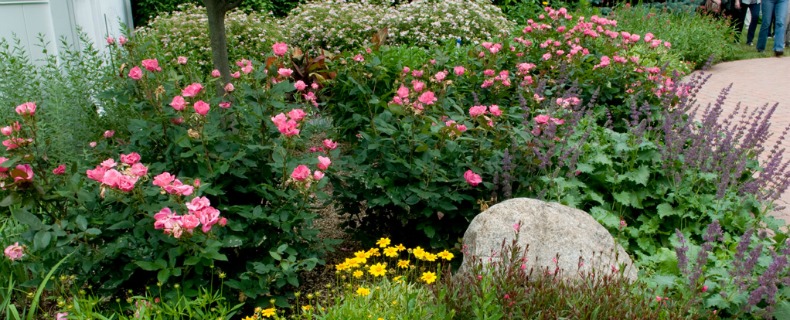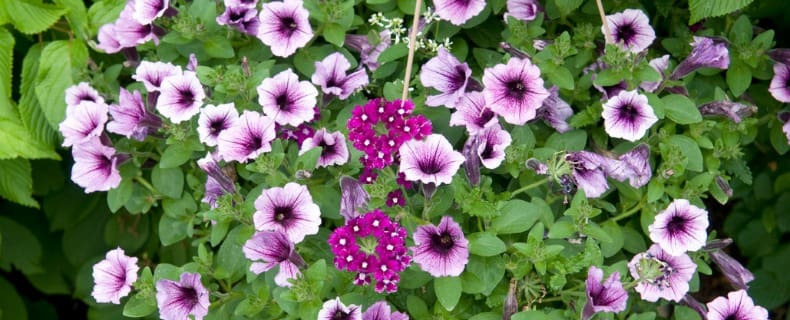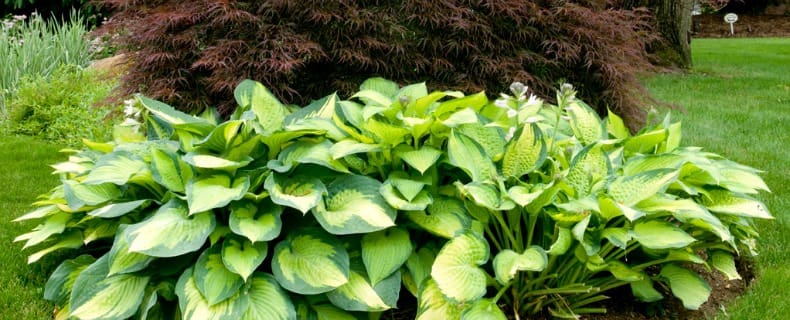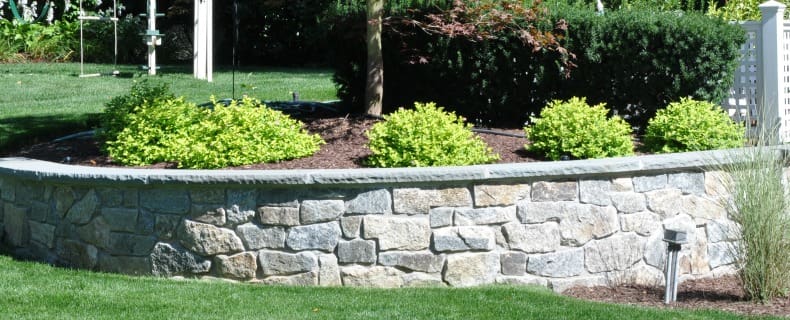Pruning your landscape trees and shrubs is one of the best things you can do for plant health, but most homeowners neglect or avoid it.
Many Northern NJ homeowners either don’t have the time, don’t have the knowledge, don’t think it’s important or are simply afraid of doing damage to their trees and shrubs.
Pruning isn’t as difficult or as risky as most people think. There’s actually few risks to your trees and shrubs, but the rewards to them are significant.
With proper techniques, the right equipment and helpful pruning tips, your trees and shrubs will produce stronger limbs, greener, thicker foliage and more blooms during their growing season.
Here are 10 important pruning tips.
Avoid Pruning New Trees and Shrubs
If you have young or newly planted trees or shrubs in your landscape, avoid pruning them for the first couple of years. New plants need as many leaves as possible to produce the food required for strong root growth.
In the first couple of years if you notice dead or broken branches, tree tags or branches competing with the leader, you can prune them close to the tree trunk.
Once trees and shrubs are three or four years old, they can be pruned over the next several years to create a proper shape and maximize foliage and flowering.
Root growth should be strong enough at that point to anchor the tree and nourish the branches.
Remove Dead or Damaged Branches
If your trees and shrubs have weak, damaged or dead limbs or branches, cut them off. They can be pruned at any time, regardless of the growth season.
Limbs and branches that are brown all the way through signal dead wood, but green beneath the brown signals signs of life.
If branches show signs of green growth, it’s best to check the proper pruning time for that variety of tree or shrub to avoid causing damage.
Here are some helpful pruning tips to determine if limbs or branches are dead:
- If limbs or branches have no leaves, while other branches have green leaves, this is sign of dead wood.
- Deciduous shrubs and trees drop their leaves in the fall. Dead branches don’t drop their leaves properly. Dead leaves often hang on to branches for months, especially in the winter.
- Old bark naturally falls off of branches over time, but it’s replaced by new bark on healthy trees and shrubs. Old branches without bark are often a sign of dead wood.
- Fungal growth like shelf fungus or wood conchs on a branch are a red flag. Chances are that the branch is very weak, dead or rapidly dying.
Make Proper Pruning Cuts
Most varieties of trees have a single trunk, so identify the best leader and later branches before you begin pruning. Remove all defective limbs and branches before you begin pruning to shape the tree, then follow these pruning tips to prune the branches:
- If you have large or tall trees, use a pole pruner for high branches.
- If you’re pruning a small branch, make the cut at a lateral bud if possible. Make a clean cut at a slight angle about 1/4-inch beyond the bud.
- For larger branches, cut outside the branch collar and branch bark ridge, but don’t leave a protruding stub. If the limb is too small and hasn’t formed a ridge collar, cut close.
Branch collar – the swollen area of trunk tissue that forms around the base of a branch. If you make a cut below the branch collar, you remove not only branch wood, but also trunk wood. This exposes the tree to more extensive decay.
Branch bark ridge – the line of rough bark running from the trunk bark to the branch-trunk. Pruning should always be outside the branch collar, at a 45 to 60 degree angle to the branch bark ridge.
If you have large, mature trees in your Bergen County landscape, pruning should be done by a landscape professional.
Pruning large trees can be dangerous due to heavy limbs and branches and the height of the trees.
Talk to a skilled arborist at Borst Landscape & Design about professional pruning and pruning tips for large, mature trees.
Topping Vs Thinning
In many cases, trees are “topped” to reduce the size or to rejuvenate growth.
When a tree is topped, the height is cut down from the top. According to pruning tips from many professional arborists, topping is not recommended for several reasons.
After two or three months, regrowth on a topped tree grows at a vigorous pace with bushy and upright growth.
It can easily break off during severe rain or wind storms, common in Northern NJ areas.
Topping also affects the tree’s structure and appearance and makes it more susceptible to insects and diseases, resulting in a shorter life for the tree.
Thinning is a better means of reducing the size of a tree or rejuvenating growth.
It removes unwanted branches by cutting them back, rather than reducing tree height. Thinning a tree returns it to it’s natural branching form before growth and results in a more open tree that emphasizes the tree’s original structure.
Thinning also makes the tree stronger by forcing diameter growth of the remaining branches.
Use Proper Pruning Tools
When pruning your trees and shrubs, select tools that will do the job, keep a sharp edge and are easy to handle.
Good pruning equipment will make more accurate cuts and do a better job.
When pruning is done, store your equipment in a dry room.
Pruning Tips: When pruning diseased trees or shrubs, disinfect saw blades and pruning shears after each cut to prevent spreading disease.
- Hand Pruners – Used to cut stems up to 3/4 inches in diameter. Bypass pruners have scissor-type blades that are curved, while anvil pruners have flat, straight blades.
- Lopping Shears – Used to cut through branches that are up to 1 3/4 inches in diameter. Lopping shears have long handles to give you extra reach and better cutting leverage.
- Pruning Saws – Used to remove thicker branches that can’t be cut with pruners or shears. To remove branches up to 2 1/2 inches in diameter, use a pruning saw with fine teeth. For thicker branches, use one with coarser teeth.
- Pole Pruners – Used to cut out-of-reach branches up to 2 inches in diameter. When fully extended, pole pruners can reach branches that are 12 feet or more in height.
- Chain Saws – Used to remove branches greater than 3 inches in diameter. Available in electric and gas models, chain saws come with different sized engines and blade lengths. Important Pruning Tips: Chain saws should be used with caution and appropriate safety gear.
Prune at the Right Time
Typically, most homeowners prune when it’s convenient for them, but that may not be the best time for the trees and shrubs.
If you’re removing limbs or branches that are weak, intertwined, damaged or dead, pruning can be done at any time of year, but healthy trees and shrubs should be pruned at certain times, depending on the species.
Pruning at the wrong time can cause damage that results in stunted growth, weak limbs and branches, poor foliage growth and less flower production.
In general, pruning in late winter when most trees and shrubs are dormant is best.
This is right before spring growth begins, so any pruning mistakes or wounds are only exposed for a short time. It’s also easier to examine the plant structure when branches are bare.
Pruning Flowering Shrubs and Trees
Spring-blooming shrubs and trees should be pruned after their blooms begin to die. These plants typically bloom on last year’s growth.
- Spring-blooming shrubs and trees – Varieties include forsythia, hydrangeas, lilac, roses and rhododendron. Hydrangeas should be pruned before mid-summer. If you prune them in winter or early spring, you will reduce next year’s blooms. Pruning Tips: To keep spring-blooming shrubs and trees flowering vigorously, remove some of the oldest shoots all the way to the ground, so younger stems will grow and bloom.
Summer-blooming and fall-blooming shrubs and trees should be pruned in late winter or early spring. These plants bloom on the current year’s growth.
- Summer-blooming shrubs and trees – Varieties include barberry, burning bush, butterfly bush, crape myrtle and potentilla. These varieties should be pruned in the winter. Pruning Tips: For tall shrubs and trees, use a pole saw with a rotating head for easier reach.
Pruning Evergreen Shrubs and Trees
Evergreen shrubs and trees fall into two categories: needle-bearing and broadleaf.
In general, it’s best to prune evergreens in early spring after new growth begins, but the exact pruning time may vary with the plant variety.
If trees and shrubs are flowering varieties, like azaleas, mahonia, magnolias and rhododendrons, or varieties that produce colorful berries, like holly bushes, wait until they stop flowering, so you can enjoy the blooms.
Pruning Tips: Evergreen cuttings make great holiday decorations for planters, window boxes, indoor arrangements and door wreaths.
Pruning Deciduous Shade Trees
It’s best to prune shade trees like oak, ash and linden when they are dormant during the winter.
Since branches are bare in winter, it’s easier to see the tree structure to make clean cuts. You’re also less likely to spread diseases through the pruning wounds in the winter. Avoid pruning your deciduous shade trees in late summer.
Pruning Tips: Trees that produce heavy winter sap flow, like birches, dogwoods, elms and maples, should be pruned in the summer to avoid bleeding sap.
Pruning Deciduous Fruit Trees
If you have fruit trees in your Bergen County landscape, pruning will encourage fruit production.
Fruit trees that bear apples, including crabapples, cherries, peaches, pears and plums should be pruned in mid-winter. Winter pruning will remove some flower buds, but it will allow the trees to get more light and produce more fruit in the spring.
Pruning Tips: Winter pruning during dormancy is especially important for apple, crabapple and pear trees. Avoid pruning during the growing season to prevent fireblight, a bacterial disease that attacks fruit trees.
Pruning the trees and shrubs in your Bergen County landscape can be a difficult and time-consuming task, but it’s important to the overall health of your plants.
For best pruning results, contact the arborists at Borst Landscape & Design about proper pruning and year-round care for your trees and shrubs.





